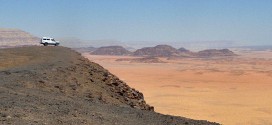
Egypt’s sunniest southern city and ancient border town located about 130 km south of Luxor, has a distinctively African atmosphere. Its ancient Egyptian name was Syene. Small enough to walk around and favoured with the most beautiful setting on the Nile, the pace of life is slow and relaxing.
Aswan has a strategic location and houses a garrison of the Egyptian army, but also has seen ancient Egyptian garrisons, the army of Lord Kitchener, Turkish troops of the Ottoman Empire as well as Roman soldiers.
The city lies on the east bank of the Nile. Visit the bazaar situated along the Corniche and continue to the Ferial Gardens, the Nubian Museum, and towards the Cemetery with its multitud of cupola surmounted tombs from the Fatimid period. Just east of the cemetery in the quarries area lies the gigantic Unfinished Obelisk; to the south of it two Greco-Roman Sarcophagi and an unfinished remain of a colossus half buried in the sand.
A visit to Elephantine Island with its timeless beauty and artifacts dating from pre-Dynastic times onward, should be included. It is the largest island in the area. Just beyond Elephantine is Kitchener Island. It was named after the British General Lord Horatio Kitchener (1850-1916) who was sent to Egypt in 1885 to head the Egyptian army, which he led against the Sudanese Mahdi. Kitchener Island is known for its gardens and the exotic fauna that Kitchener planted and which flourishes until today.
The cliffs on the opposite river shore (West Bank) are surmounted by several tombs. To mention are the tomb of Marabut, Qubbet el-Hawwa, a local Saint, as well as the tombs of local (Pharaonic) nobles and dignitaries, and upriver the tomb of Mohamed Shah, who died in 1957. Known as the tomb of Aga Khan one cannot but admire its beauty of simplicity. A road from there leads to the Coptic Monastery of St. Simeon, which was built in the Sixth Century in honour of Anba Hadra, a local Saint. Just upriver stretches the old Aswan Dam, built by the British. The dam was enlarged and expanded several times but proved insufficient to control the Nile waters for irrigation.
The River Nile and Lake Nasser
The Nile is the longest river in the world and without doubt the “life blood” of Egypt. Throughout Egyptian history the Nile has provided water for consumption, irrigation and replenishment of fertile soils. About 95% of Egypt’s population live in the Nile Delta or within 20km of the river banks. This segment of the Nile River has been modified by the Aswan High Dam. Construction works started in 1985, the dam was inaugurated in 1971. The 110m high dam created Lake Nasser, one of the world’s largest artificial lakes and water reservoirs. The High Dam added a whole new aspect to Egypt, and a new environment as well. The lake is some 800 km long.
The Temple of Philae
The Philae Temple has been removed from its original location at the island of Philae and was relocated on the Island of Agilika due to the rising waters after completion of the High Dam. This temple was dedicated to the Goddess Isis. It features an entrance called the vestibule of Nectanebos I and has a temple for the emperor Hadrian, a temple for Hathor and two Pylons in honor of Isis and Osiris.
Aswan Granite Quarries (Unfinished Obelisk)
Most of the granite used to build the ancient Egyptian tombs, temples and obelisks came from the quarries in the Aswan area. These quarries contain many inscriptions of quarry projects successfully completed. Of particular interest is the Unfinished Obelisk located in the northern quarry. Because of a large crack in its stone body work was never finished, but upon completion it would have been the largest stone ever handled by mankind.
The Agha Khan Mausoleum
The pink granite mausoleum in Aswan was built in 1950 for the Shiite spiritual leader of the Ismailis. Agha Khan was educated in Europe and succeeded his father in 1885 to become the 48th Imam. He was succeeded by his son after his death in 1957 and after him his grandson, Karim Agha Khan IV. Members of this sect consider themselves to be the direct spiritual descendants of the Fatimides.
The Nubian Museum
The Nubian Museum harbours the history of “The Land of Gold” as the word Nubia means in Hieroglyphic, language of ancient Egypt, in which pictorial symbols were used. Hence, this land was the enormous golden treasure chest in ancient times. The Nubian Museum in Aswan is one of the most important Egyptian museums and the only one of its kind in the world. The construction time for the museum building took eleven years and costed L.E. 60 million. In this Museum of Nubia exhibits are on display nowhere else in the world to be seen.
Elephantine Island
Elephantine Island is the largest of the Aswan Islands and one of the most ancient sites of Egypt with artifacts dating back to predynastic times. The reason probably due to its location at the first cataract of the Nile which provided a natural border between Egypt and Nubia. As an Island, it was also easy to defend against invaders. The ancient town is located South of the island and served as a fortress through its history. At one time, a bridge existed to connect the mainland with the island.
Elephantine is Greek for elephant. In ancient times the island was called Abu, or Yabu, also meaning elephant. It is believed that the island once was an important trading center mainly for ivory.
Kitchner Island (Botanical Garden).
Kitchner Island is a botanical garden and orchard with exotic plants and trees from all over the world. It is a perfect place to spend a lazy afternoon in the cool shade of the many trees. This place is located on the other side of Elephantine Island and can be reached by boat only. The island was given to Lord Kitchner in gratitude for his military intervention in Sudan. Lord Kitchener choose to live on the island and, by importing flowers, plants and trees from all over the world, created this beautiful botanical garden.
The Monastery of St. Simeon
This abandoned monastery near the Agha Khan Mausoleum on the west bank represents the typical style of the early Christian monasteries. It was one of the largest Coptic monasteries in Egypt with thousands of inhabitants. Construction began in the 6th century, but most buildings date back to the 7th century. It was first dedicated to Amba Hadra, a bishop of Aswan and Saint of the late 4th century. Legend says that right after his wedding procedure he encountered a funeral procession which inspired him to live the remainder of his life as a hermit (Editor’s note: The reaction of his newly wedded wife is not known).
This Christian monastery is built as a fortress. The walls originally were ten meters high with keeps or towers on two levels as lookout posts against invaders. The lower level of stone is mostly intact but the upper level of mud-brick has all but vanished. The monastery was rebuilt in the 10th century but was destroyed in 1173 by Saladin who feared that it might serve as a refuge of marauding Christian Nubians who made forays into southern Egypt.
Lake Nasser Temples
Lake Nasser was created as a result of the construction of the Aswan High Dam. Cruising the Lake is an enjoyable way to see serene desert vistas and a variety of temples. The Amada Temple of Thutmose III and Amunhotep II display a vivid collection of brightly painted reliefs of the kings facing their gods. The sandstone temple is dedicated to Amon-Re & Re-Harrakte. This temple has been moved 2.5 km from its original site. Touring Aswan, it is imperative to see the Beit El-Wali Temple located near the Kalabsha Temple located at the outskirts of Aswan.
Carved into the hillside another Ramses II Nubian monument demonstrates military might. Beit El-Wali celebrates Ramses II’s victories over the Nubians, Ethiopian Asians and Libyans. Two Doric columns with brightly colored scenes inside the temple show Ramses making offerings to the gods of Horus, Khnum, Satet and Anubis. The temple of Dakka is dedicated to Thoth, the God of Devine Wisdom, Time, Science and Literature. The original site of this temple, many kilometers north, lies submerged under the waters of Lake Nasser. The temple dates back to Meiotic & Ptolemaic periods.
The Kalabsha temple
was moved in 1970 to its present location in Nubia. It was the largest freestanding temple in Nubian Egypt and shows us the typical style of the classic Ptolemaic period with pylons, courtyard, hypostyle hall and three-room sanctuary. The courtyard inside the pylon once had pillars on three sides.
The Wadi Seboua Temple of Ramses II is dedicated to two Gods: Amon Ra and Harmakis and was first documented in 1905 by James Henry Breasted. The temple is situated 4km west of its original ancient site. The courtyard inside the pylon once had pillars on three sides. The endangered fortress of Kasr Ibrahim is rich with remains from the Nubian Pharaohs and Roman-era inhabitants. Kasr Ibrahim was a strategic fortress during pharaonic times due to its elevated position. During the Middle Ages, a stone church was erected which was later converted into a mosque.
Excursions :
Felucca Ride
High Dam, Granite Quarries with Furnished Oblisk
High Dam, Unfinished Obelisk & Philae Temple
Abu Simbel Temple
Philae Sound & Light Show
 Sakura Travel World Group
Sakura Travel World Group








